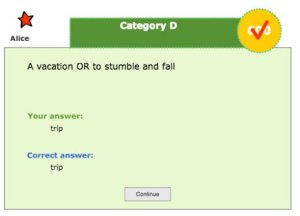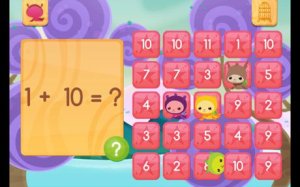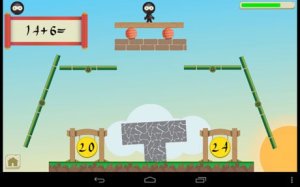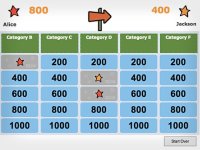Beyond the Worksheet: Playsheets, GBL, and Gamification
Your content has been saved!
Go to My Saved Content.Game-based learning (GBL) and gamification are hot topics in education. These terms are often used interchangeably, but they actually describe different phenomena. GBL is when students play games to learn content. Gamification is the application of game based elements to non-game situations.
Playing games can give students context for what they are learning. When my students played Angry Birds in the classroom, none of them asked what the purpose of learning x intercepts was. Gamification applications do not necessarily provide a context for students, but they usually give students an indicator of their achievement and progress. Placing a gold star on a paper provides reinforcement that students are on the right track and that their efforts have resulted in a positive outcome, thus increasing student self-efficacy.
More and more students today have access to technology in the classroom. They are able to use computing devices to learn, reinforce their learning, or create. Even with only a single tablet for the classroom, teachers can allow students to take turns utilizing the device for educational purposes. While the devices can be used to read digital text, many teachers are using them to have students play educational games.
What is a Playsheet?
There are different types of games that students can play on a device. Some truly fall under the category of GBL, such as CellCraft, which provides biology students with information about cells and then allows them to interact in an environment as if they were a cell. Other games provide reinforcement of concepts -- these are playsheets.

Playsheets fall in between GBL and gamification. They are games that allow students to practice concepts learned in class by playing on a device in or outside of class. The content of the game presents questions that mimic what would be seen on a worksheet. The worksheet content is converted into a game by adding things such as fun graphics, a progress bar, leveling up, sound effects, pop-up messages to indicate success or failure, badges or trophies, avatars, leaderboards, or storylines. It is transforming the work in a worksheet into play. Students play their way to success.
The games on Khan Academy are a popular example of what playsheets can be. As the user is asked questions (such as, "The area of a square is 25 square inches. How long is each side?"), they receive a positive sound effect when answering correctly and a smiley face and green check mark to show their progress toward getting five correct answers in a row.
The website Quia contains games that mimic popular games such as Battleship and Jeopardy. The teacher can type the worksheet questions into templates to quickly and easily create games for students to play during class or for homework. I personally would create these playsheets in the five-minute passing period before my students came into class. They would eagerly ask me to make playsheets.

5 Benefits to Using Playsheets in the Classroom
Most math games created for the tablet devices are playsheets. The gaming elements are superfluous to the learning objective -- for example, shooting space aliens when answering math facts correctly. Playsheets are not bad. While they may be described as chocolate-covered broccoli, students do enjoy playing playsheets.
Here are five benefits to using playsheets in the classroom.
- Engagement: Students are engaged in their learning. The gaming elements draw students in and motivate them to continue practicing. You can find students voluntarily practicing playsheets, even when they are not assigned.
- Feedback: Digital playsheets have the advantage of giving students immediate feedback. This alone is an advantage over traditional worksheets. Students can correct their mistakes or ask for help before they have practiced incorrectly too many times. They don't have to wait for the teacher to grade their work to know that they're doing a good job, because the work is corrected after every question. Success breeds success. As a student is successful, he or she will continue to practice.
- Progress: Typically, a playsheet allows students to know what their score is as they play the game. A progress bar, adding stars, or a tally of the number of correct answers can help students feel that their efforts are resulting in positive progress. They're able to set goals to help push themselves beyond what they would normally strive for.
- Celebrate Success: Playsheets often have elements that encourage students and help them feel successful. This motivates them to continue playing. Sound effects can help the student know he or she is on the right or wrong track. Words or stars can appear, helping the student to feel as if his or her efforts are being celebrated. When a student reaches a certain level, it becomes something that we as teachers can celebrate with the child. Reaching a short-term goal is something to get excited about.
- Self Grading: Digital playsheets can free up teachers' time. They spend less time grading worksheets and reviewing answers with their class. Instead, they have more time to engage with students and design activities that continue to stimulate and challenge. This allows for a shift in what is possible in the classroom.

Playsheets are not a substitute for teachers. While playsheets can be a part of the learning environment the teacher creates, they should not be the entire educational experience. Using playsheets in place of paper worksheets has tremendous benefits, but this format can never replace engaging activities, projects, and discussions. As with all things, moderation is the key.
Have you ever used playsheets with your class? If so, what was your experience?
